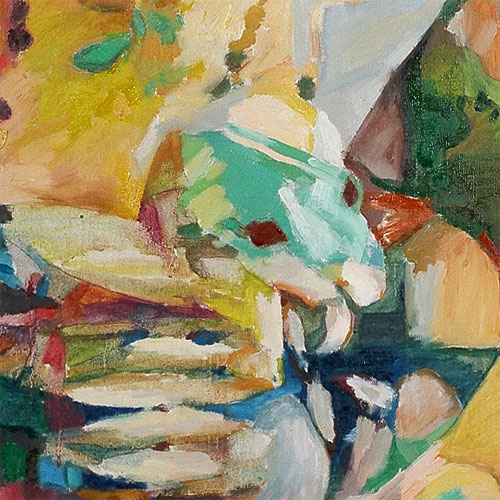Lady with Ermine (Leonardo da Vinci Improvisation)
Print information
- Artwork printed by EPSON Stylus Pro 7880 (Epson Ultra Chrome K3 Vivid Magenta) on canvas.
- Limited edition prints of 100. Each artwork will be individually printed, signed, dated and numbered by the artist Vladimir Zunuzin.
Payment and delivery
- Payments by Paypal or 2Checkout.
- Free worldwide shipping with tracking. Will usually ship within 3-5 business days.
- Year created: 2005
- Medium: oil on canvas
- Dimensions (cm): 145x100
Artwork reimagines Leonardo da Vinci’s Lady with an Ermine through a kaleidoscope of shifting planes and vibrant color. The familiar serene face emerges with striking clarity, framed by angular brushstrokes of red, green, and gold that fracture her form into abstract layers. She appears both timeless and fleeting, caught between realism and dissolution.
The hands, delicately suggested through overlapping shapes, seem to cradle not just an animal but the essence of memory itself, dissolving into luminous fields of color. The controlled expression of the figure contrasts with the fluid, restless energy of the background, creating a dialogue between stability and motion.
By breaking apart classical portraiture and reassembling it in bold chromatic fragments, the artwork invites viewers to experience the subject anew. It honors the grace of the original while celebrating modern experimentation, transforming a Renaissance icon into a radiant vision of abstraction and emotional depth.








